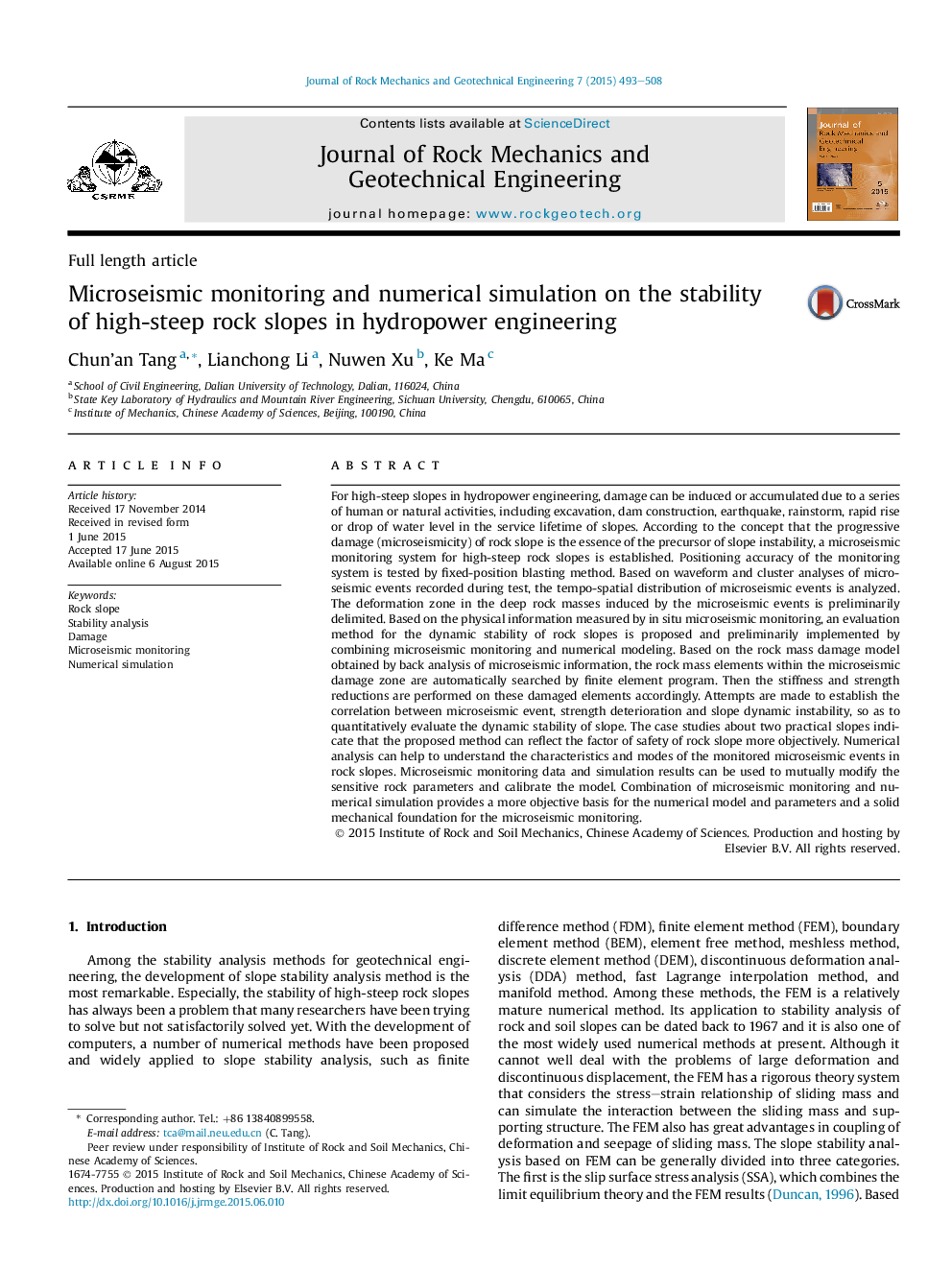| Article ID | Journal | Published Year | Pages | File Type |
|---|---|---|---|---|
| 286538 | Journal of Rock Mechanics and Geotechnical Engineering | 2015 | 16 Pages |
For high-steep slopes in hydropower engineering, damage can be induced or accumulated due to a series of human or natural activities, including excavation, dam construction, earthquake, rainstorm, rapid rise or drop of water level in the service lifetime of slopes. According to the concept that the progressive damage (microseismicity) of rock slope is the essence of the precursor of slope instability, a microseismic monitoring system for high-steep rock slopes is established. Positioning accuracy of the monitoring system is tested by fixed-position blasting method. Based on waveform and cluster analyses of microseismic events recorded during test, the tempo-spatial distribution of microseismic events is analyzed. The deformation zone in the deep rock masses induced by the microseismic events is preliminarily delimited. Based on the physical information measured by in situ microseismic monitoring, an evaluation method for the dynamic stability of rock slopes is proposed and preliminarily implemented by combining microseismic monitoring and numerical modeling. Based on the rock mass damage model obtained by back analysis of microseismic information, the rock mass elements within the microseismic damage zone are automatically searched by finite element program. Then the stiffness and strength reductions are performed on these damaged elements accordingly. Attempts are made to establish the correlation between microseismic event, strength deterioration and slope dynamic instability, so as to quantitatively evaluate the dynamic stability of slope. The case studies about two practical slopes indicate that the proposed method can reflect the factor of safety of rock slope more objectively. Numerical analysis can help to understand the characteristics and modes of the monitored microseismic events in rock slopes. Microseismic monitoring data and simulation results can be used to mutually modify the sensitive rock parameters and calibrate the model. Combination of microseismic monitoring and numerical simulation provides a more objective basis for the numerical model and parameters and a solid mechanical foundation for the microseismic monitoring.
